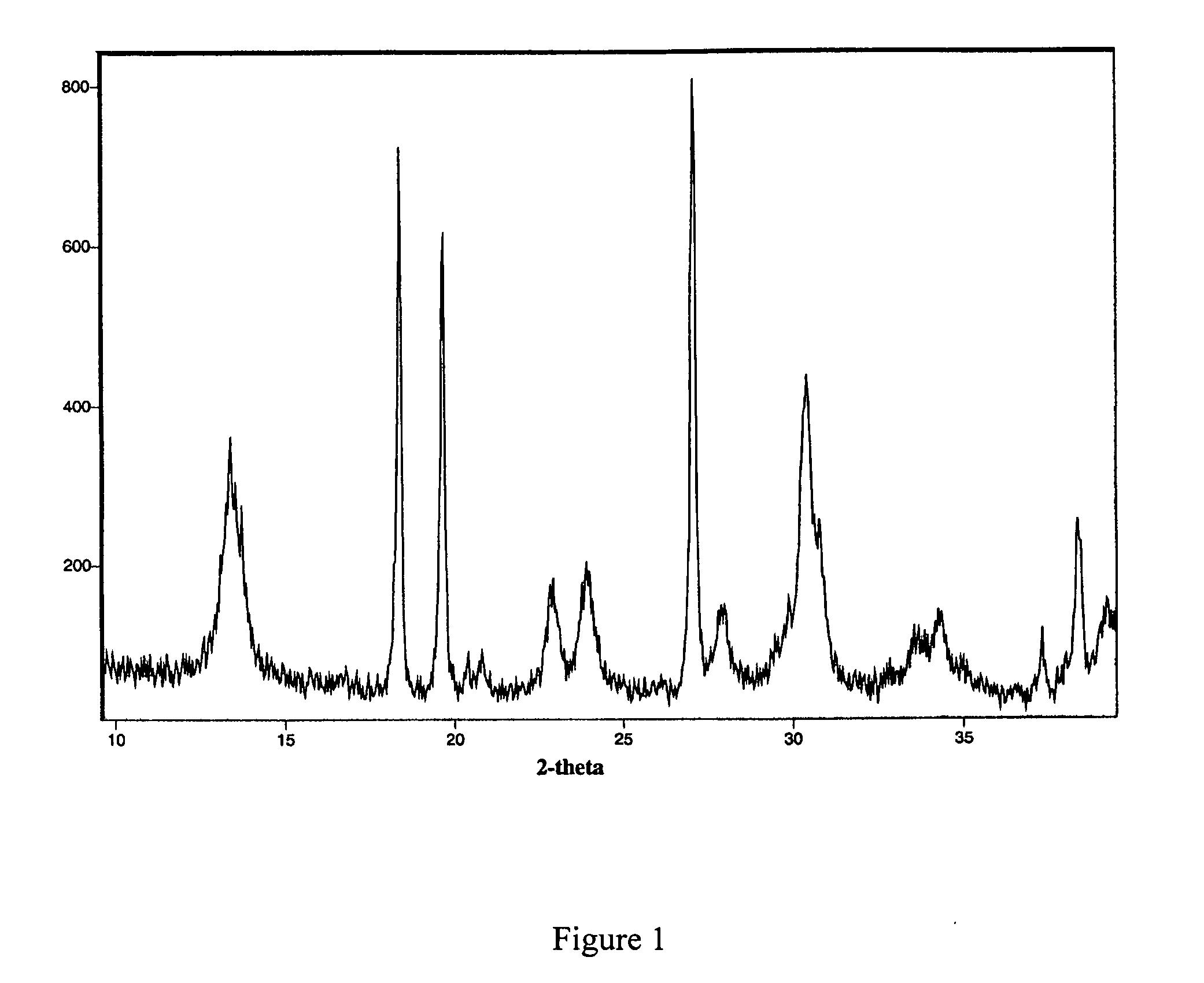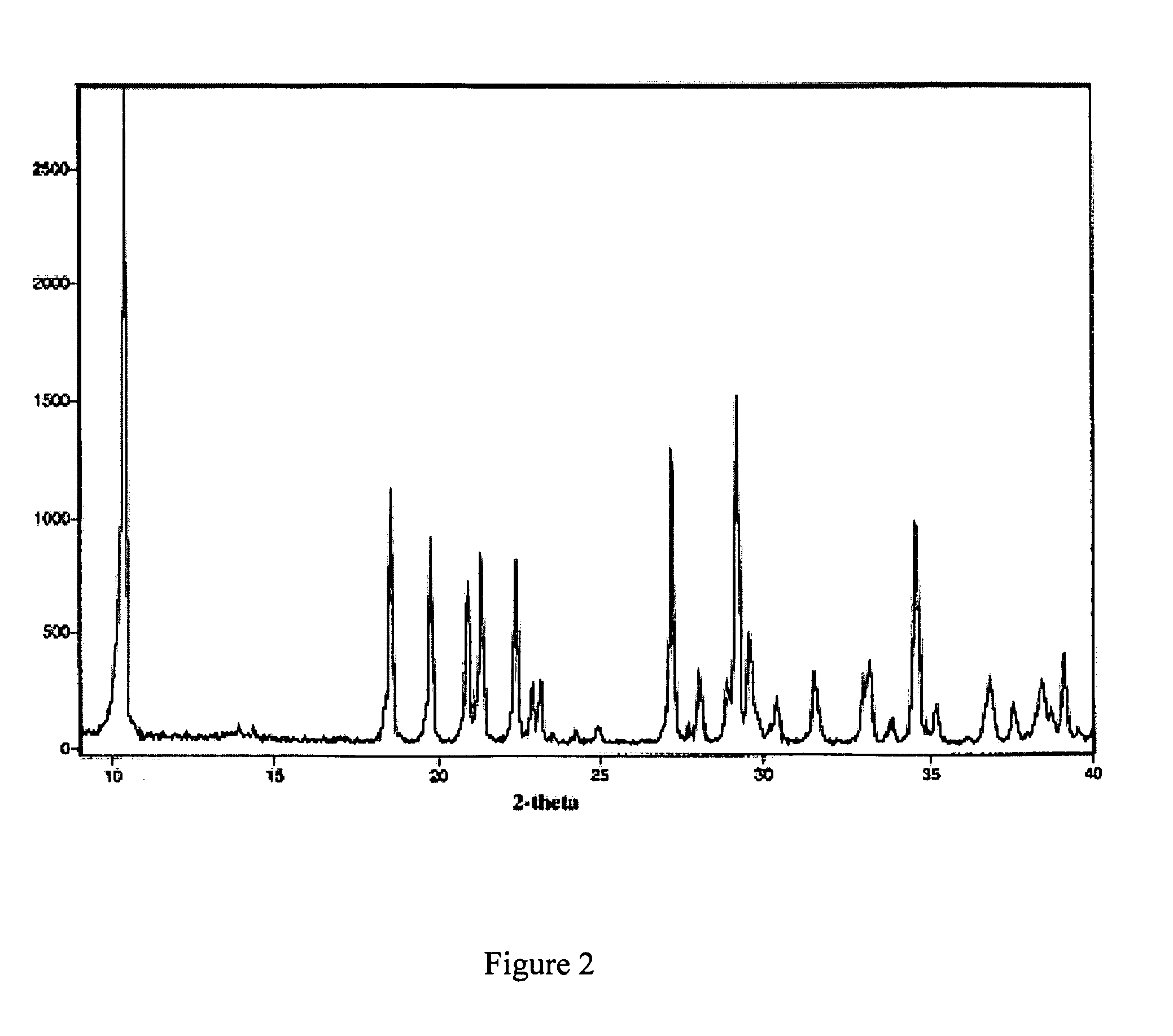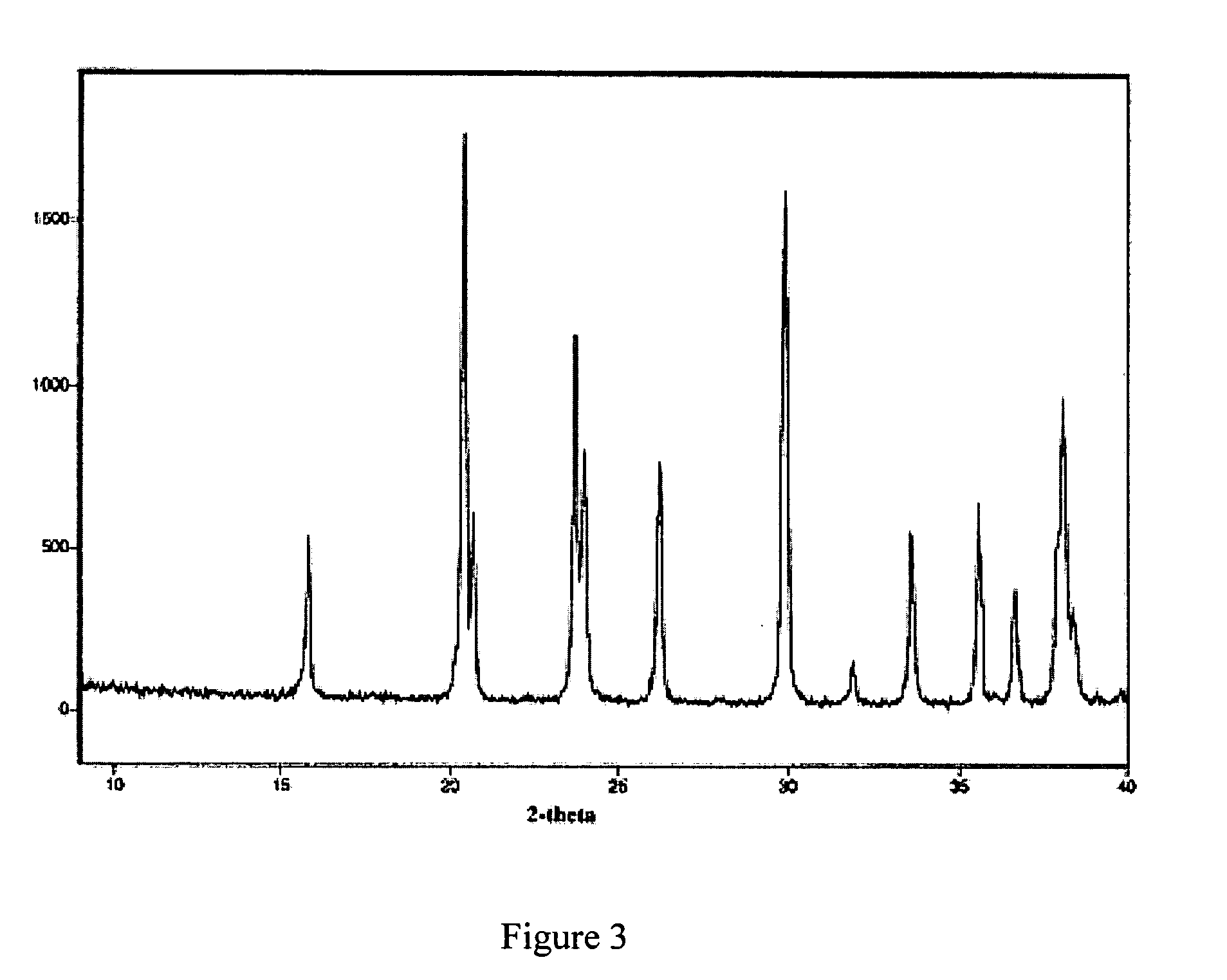Assay for lanthanum hydroxycarbonate
a technology of lanthanum hydroxycarbonate and xray diffraction, which is applied in the direction of instruments, drug compositions, extracellular fluid disorders, etc., can solve the problems of inability to develop quantitative methods to monitor the presence of degradants, inability to distinguish pure pharmaceutical agents from pharmaceutical agents containing, and inability to use chromatographic techniques such as hplc to develop quantitative methods
- Summary
- Abstract
- Description
- Claims
- Application Information
AI Technical Summary
Benefits of technology
Problems solved by technology
Method used
Image
Examples
example 6.1
Preparation of Pure Hydroxycarbonate Polymorph (II)
[0090] The starting material, La2(CO3)3.4H2O, was provided by Shire Pharmaceutical and was analyzed by XRPD to confirm its identity. A mixture of about 1500 g (2.8 mol) of La2(CO3)3.4H2O and 10 liters of water was heated to approximately 60° C. for approximately 2 h. A sample was removed and analyzed by XRPD. The mixture was heated to approximately 70° C. for approximately 17 h. A sample was removed and analyzed by XRPD. The mixture was heated to approximately 80° C. for approximately 7 h. A sample was removed and analyzed by XRPD. The mixture was heated to approximately 90° C. for approximately 13 h. A sample was removed, analyzed by XRPD, and found to be completely hydroxycarbonate polymorph (II). The mixture was allowed to cool to ambient temperature and filtered. The solid was dried under vacuum pump pressure for approximately three days to give 1151 g of hydroxycarbonate polymorph (II).
[0091] A portion of the sample was analy...
example 6.2
Preparation of Pure Hydroxycarbonate Polymorph (I)
[0092] A mixture of 15.0 g of La2O3, 24.7 mL of 37.7% hydrochloric acid, and 42 mL of water was cooled to ice bath temperature and filtered. To the cold filtrate was added, dropwise, a solution of 15.7 g of ammonium carbonate in 70 mL of water. The resulting slurry was allowed to warm to ambient temperature and stirred overnight. The solids were recovered by vacuum filtration, washed with three 50-mL portions of water, allowed to dry in the air, and added to a solution of 6.31 g of ammonium carbonate in 107 mL of water. The resulting slurry was heated to reflux for approximately 24 h. A portion of solid was removed, analyzed by XRPD, and found to contain only hydroxycarbonate polymorph (I). The reaction slurry was vacuum filtered and the solids were allowed to dry in the air, washed with 76 mL of water, recovered by vacuum filtration, and again allowed to dry in the air to give 17.7 g of hydroxycarbonate polymorph (I).
[0093] A port...
example 6.3
XRD Using Visual and PLS Models
[0094] Lanthanum hydroxycarbonate was first analyzed using a visual and partial least squares method using the XRD data. The analytical method for lanthanum hydroxycarbonate in lanthanum carbonate was done as a 2-state process: a visual one and a quantitative one. Stage 1 was the visual evaluation of the XRD spectra to determine if any LHC was visible. The visual technique was used because this gave the lowest limit of detection (LOD) possible, certainly lower than a typical calculation modeling method such as PLS. However PLS modeling and analysis was used for the second stage to provide quantitation of the impurities. This gives LOD and limit of quantitation (LOQ) as follows:
Lanthanum hydroxycarbonate polymorph (I): LOD 1.7% visual LOQ 2% PLS
Lanthanum hydroxycarbonate polymorph (II): LOD 0.3% visual LOQ 3.4% PLS
[0095] Similarly, tablet samples were prepared and the LOD for each polymorph was estimated at 0.5% w / w of tablet weight (actually 0.39...
PUM
 Login to View More
Login to View More Abstract
Description
Claims
Application Information
 Login to View More
Login to View More - R&D
- Intellectual Property
- Life Sciences
- Materials
- Tech Scout
- Unparalleled Data Quality
- Higher Quality Content
- 60% Fewer Hallucinations
Browse by: Latest US Patents, China's latest patents, Technical Efficacy Thesaurus, Application Domain, Technology Topic, Popular Technical Reports.
© 2025 PatSnap. All rights reserved.Legal|Privacy policy|Modern Slavery Act Transparency Statement|Sitemap|About US| Contact US: help@patsnap.com



